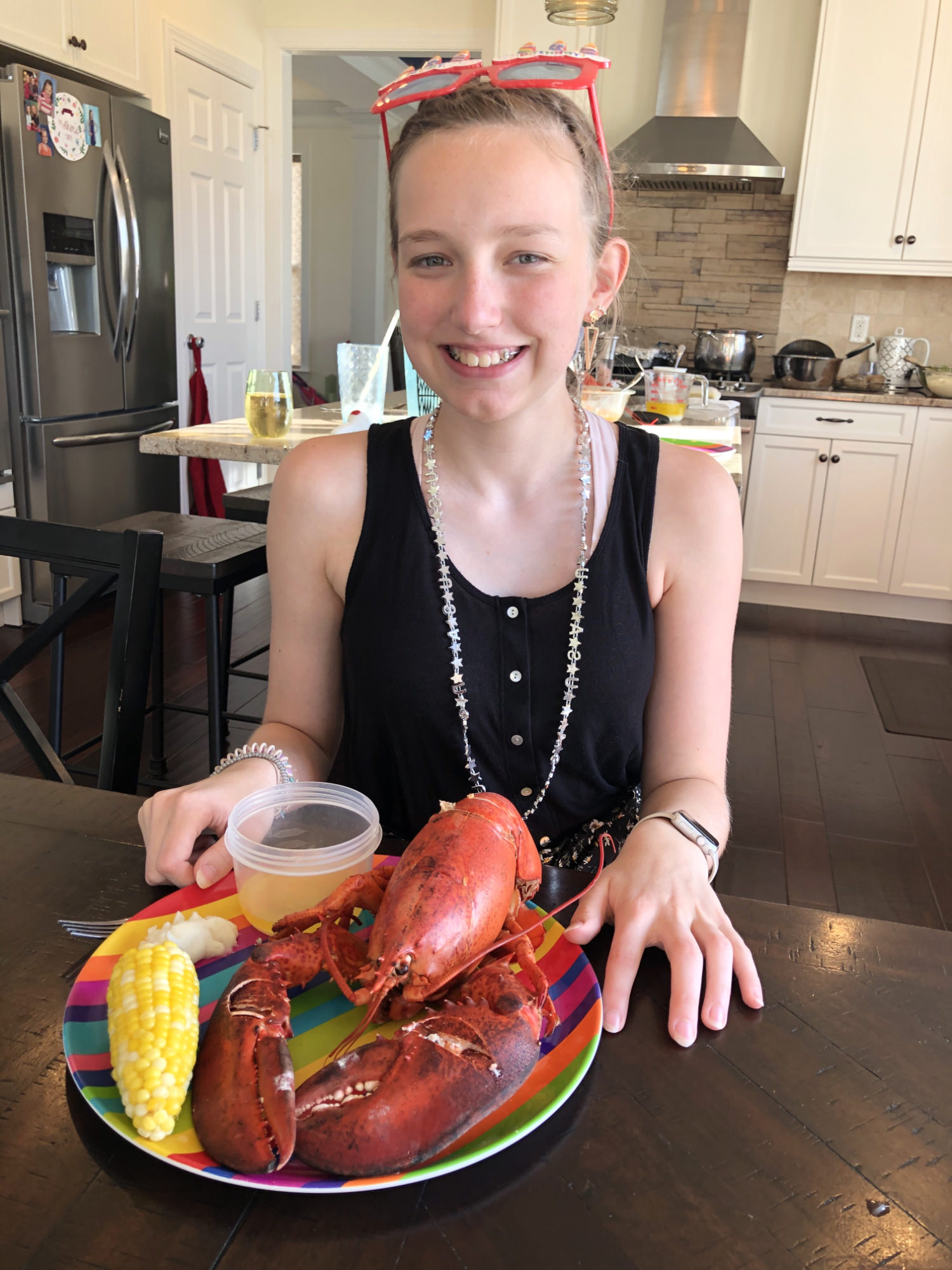My daughter is a seafood addict. She sees seafood and she eats it! Lobster is by far her favorite, but she also regularly eats salmon, flounder, cod and shrimp. As a mom and a Dietitian, I am thrilled!
The Dietary Guidelines for Americans recommend that adults eat seafood at least twice weekly (about 8 ounces (oz.) total). I do realize that not everyone is a seafood fanatic like my daughter but unfortunately, the average intake is only 2.7 oz. and many people are not even eating that much! The weekly recommended intake is different with women who are pregnant or breast-feeding. They should consume 8 – 12 oz. a week of low-mercury seafood. Children should also eat fish twice per week, but their individual portion size depends on their age: 2-3 years = 1 oz.; 4-7 years = 2 oz.; 8-10 years = 3 oz.; 11 and older = 4oz.
You may have some questions on this, and rightly so. I intend on answering some but if you have any more, feel free to reach out and ask! Just click here!
WHY IS SEAFOOD SO IMPORTANT?
Seafood is a lean, high protein option. Fatty fish like salmon, mackerel and herring are good sources of omega-3’s, which can help your heart stay healthy and keep your brain and immune system working optimally. Seafood also contains calcium, to strengthen your bones, vitamin D, to help absorb the calcium, and vitamin B12 which can be vital for neurological function and stability.
DOES IT MATTER WHAT KIND OF SEAFOOD?
Low-mercury seafood is your best option, especially for women who are pregnant or nursing and young children because high levels of mercury can damage the brain and nerves. Try salmon, canned light tuna, flounder, shrimp, cod, and haddock.
Shellfish such as shrimp and lobster contain more cholesterol than other forms of seafood. If your total cholesterol or LDL cholesterol is high, limit the amount of shellfish you have.
ARE THERE ANY OTHER OPTIONS/ALTERNATIVES?
Coming from a seafood loving family, I know that some people line up to eat foods like salmon, lobster, and shrimp. What I also know is that there are many people who sit out from these choices because they are not sure how to prepare them or are turned off by the ‘fishy’ smell. If you are open to experimenting, start with ordering seafood when eating out. Having a professionally trained chef prepare it increases the likelihood of it tasting great! Plus, you don’t have to deal with the fresh fish smell. Supermarkets will also prep seafood for you, coating it or stuffing it so that all you need to do is follow the instructions to cook it. Finally, search out new recipes. Foodnetwork.com and dishonfish.com are two of my favorites!
While I fully encourage everyone to try seafood, I understand that not everyone is going to like it and that other may even be allergic. If you are not eating seafood, you can get your calcium, vitamin d, vitamin b12, and omega-3 intake by eating a variety of other foods.
Alternative foods with calcium-
- Dairy products such as milk, cheese, and yogurt
- Dark leafy greens such as spinach, kale, and collard greens
- Tofu
Alternative foods with vitamin d-
- Fortified orange juice
- Fortified almond milk and soy milk
- Portabella mushrooms (leave them on a sunny windowsill for 30 minutes first)
- You can also get vitamin d from being out in the sun. Sunscreen and windows, however, reduce your skin’s ability to make vitamin D. Aim for 15-30 minutes of sun exposure around midday and then lather up with sunscreen to protect against skin cancers.
Alternative foods with vitamin b12-
- Soymilk
- Cottage cheese
- Eggs
Alternative foods with omega-3-
- Walnuts
- Flaxseeds, hemp seeds & chia seeds
- Edamame (soybeans)
There are also daily vitamins & supplements that contain these essential nutrients, but I would encourage you to talk with a professional (I’d be happy to help!) to figure out if it’s right for you, and if so, which one is the best option.
Seafood provides numerous health benefits, supporting our nervous, immune, and digestive systems. Just 2 servings a week can provide you with these benefits and, with so much variety, the options are endless. Remember if you have any more questions, need recipes or have a health goal you are struggling to reach, please feel free to contact me!
*Information provided is not intended to diagnose, treat, cure, or prevent disease. If you have any concerns about your own health, are taking medication or have an underlying medical condition, you should always consult with a physician, healthcare provider or dietitian before making any major changes to your diet or exercise routine. Supplements are not regulated by the FDA. Use caution when choosing brands and blends.





